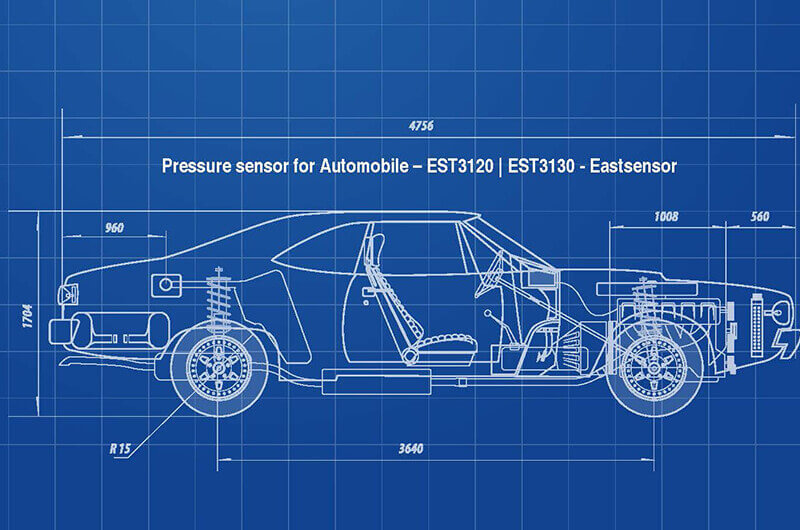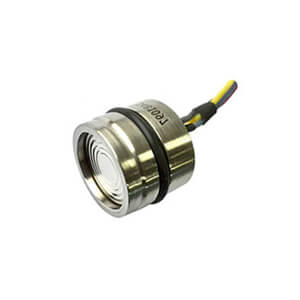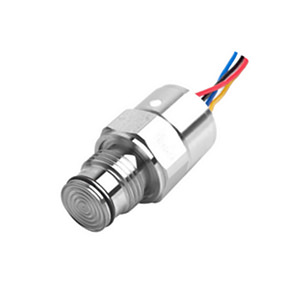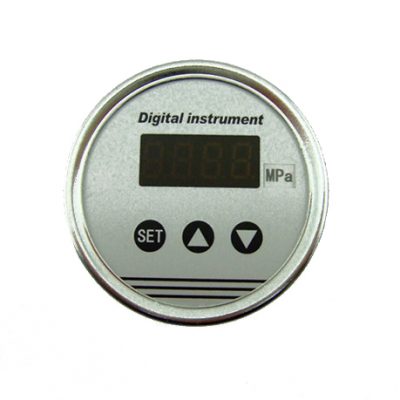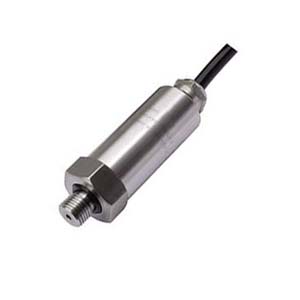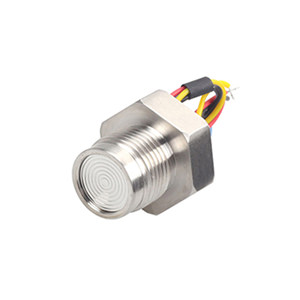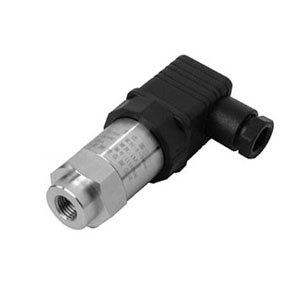Driving would be a completely different experience without all the pressure sensors utilized throughout the modern-day car, assisting to handle whatever from braking to electrical windows, exhaust emissions to power steering.
Many of the important systems in a car rely on pressure sensors to measure and keep track of crucial specifications, which has ended up being main aspect in making our roadways more secure, reducing pollution, and enhancing our driving experience.
How precisely do pressure sensors make it possible for much better automobiles, and what do manufacturers require to understand in order to do that?
Discovering early faults in hydraulic brakes
That simple braking experience you’re utilized to and the responsiveness of the pedal below your foot is down to a complicated mix of elements, consisting of automobile pressure sensors.
In-car systems detect the pressure you’re using on the pedal then enhance it to make your efforts more reliable. These systems utilize an absolute pressure sensor to keep an eye on the vacuum preserved in 2 different chambers inside the brake servo (see diagram listed below).
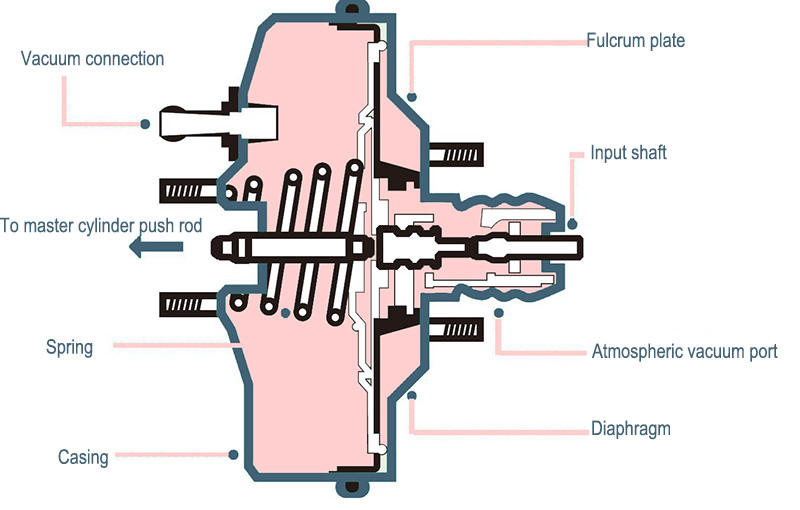
Under typical operating conditions, when the brake pedal is depressed, it enables air pressure to stream into among the chambers. This increases the pressure on a diaphragm, which, consequently, increases the effort used on the master cylinder.
When the brake pedal is launched the vacuum is brought back utilizing a vacuum source, which might be by means of a devoted pump or drawn from the manifold.
If the vacuum in one or both chambers cannot be kept or brought back, a fault condition emerges.
An absolute pressure sensor is utilized to keep an eye on the pressure in the chambers and notify the driver or engine management system if the pressure inside the chambers is not low enough to get efficient.
Without a method of measuring the pressure inside the chambers, the system might stop working without having the driver understanding and lead to an abrupt loss of braking effectiveness, simply when it’s required most.
Manufacturers are utilizing Manifold Absolute Pressure (MAP) sensors in this type of application, which may possibly be provided in surface-mount plans and have the ability to measure pressures in the variety of 10 to 150 kPa (kilopascal) with a precision of 1% throughout the whole range.
Optimizing the fuel mix to match the air pressure.
Making internal combustion engines as effective as possible has much to do with getting the fuel mix ideal for the fundamental conditions. This consists of the real and wanted speed, obviously, however likewise consists of making changes for the current engine speed, and the engine and manifold temperature level.
When changing the fuel mix and ignition timing, it isn’t simply the air temperature that requires to be measured though; the air pressure is likewise a crucial aspect. Here, absolute pressure sensors are utilized to offer the engine management system (EMS) with the info it requires.
The sensors are utilized to measure the pressure inside the manifold and, since air is attracted from the surrounding location, the outdoors atmospheric pressure too. Barometric atmospheric pressure can have a substantial impact on fuel mix, so by measuring it and compensating for modifications, the EMS can tune the engine for optimal effectiveness, whether the cars and truck is at water level or 20,000 feet above it.
MAP sensors are utilized here, too, however in this particular case they require to become able to measure pressures as high as 400 kPA.
Cleaning exhaust filters automatically
Diesel fuel is among the most typical types of fuel for lorries, specifically big haulage, building and construction and farming lorries, and pressure sensors are important in making diesel motors as well-maintained as possible.
Particle filters inside the engine are utilized to record the soot and other particles present in the exhaust gas prior to it can leave into the environment. The filters then require cleansing, which is done by burning the particulates.
This can either be attained utilizing an active system which heats up the filter to a temperature where the soot combusts, or a passive system utilizing a catalyst.
In the active system (see diagram listed below), pressure sensors are utilized to measure the exhaust gas pressure. When pressure throughout the diesel particle filter (DPF) reaches a limit, the cleansing procedure is activated. This could be measured by utilizing 2 absolute pressure sensors or a differential pressure sensor.
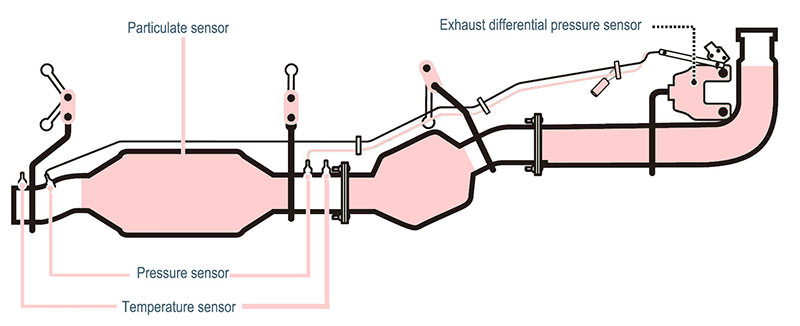
Guaranteeing the catalytic converter is sealed
In a passive system, particulates in exhaust gases are ruined utilizing a catalytic converter. In this particular case a pressure sensor is utilized to make certain the system can work effectively even at low engine temperature levels.
The catalytic converter requires to get up to temperature level rapidly so as to work effectively. Generally, it requires to reach in excess of 300 ° C however when the engine is cold so too is the catalytic converter. Feeding air into the exhaust manifold activates an exothermic procedure, which assists raise the temperature of the catalytic converter.
When at temperature level, the pump for the secondary air valve is turned off and the system is sealed with a valve. Utilizing an absolute pressure sensor placed in between the valve and the pump offers the needed guarantee that the valve is closed correctly and the rest of the system is secured from damaging exhaust gases.
Keeping track of exhaust recirculation
Automobile pressure sensor are under pressure to lower total engine emissions, and one tool in package is to recirculate portion of the exhaust gas.
Efficient in both fuel and diesel motor, the strategy decreases the temperature level in the combustion chamber, which has the impact of decreasing the quantity of Nitrogen Oxide produced and released.
Controlling the engine gas recirculation (EGR) process includes utilizing an absolute pressure sensor to keep track of the pressure at the valve. Without having that control the system might end up being unsteady and lead to too little or too much gas recirculation.
The producers of automobile pressure sensor are continuously aiming to enhance their procedures to provide pressure sensors that are much better able to stand up to the extreme environments present in this particular class of application.
Examining the pressure of critical fluids
Possibly the absolute most typical usage for an electronic pressure sensor is to measure the pressure of the lorry’s crucial fluids for example, engine transmission, oil and transmission oil, and the hydraulic oil in the braking system, cooling system, and fuel systems.
An electronic automobile pressure sensor will have a part of its structure exposed to the fluid being measured, so they require to become durable and robust. Normally, it will utilize the piezoresistive effect, which discovers the modification in resistance of a material arising from deflection brought on by the pressure put in by the fluid.
Automobile pressure sensors targeting this application area will generally have the ability to stand up to severe environments, be sealed to IP 6k 9k (dust-tight, high-pressure steam/jet cleansing), and have the ability to measure pressures from 0 bar to as much as 600 bar throughout an operating temperature level range of -40 to +125 ° C.
Stopping doors from catching your fingers
Electric door closing on vehicles is an excellent invention however if you (or somebody smaller sized) gets in between the door and the frame at the incorrect time, a problem can result– however, automobile pressure sensors exist to assist.
Utilizing relative pressure sensors linked to a sealed hose pipe and installed around the edge of the doorframe, any blockage could be identified rapidly and dependably.
Any compression of the tube triggers the pressure inside to increase, which is immediately gotten by the relative pressure sensor and communicated to the automobile’s security system. It will stop closing; the very same method works for windows too if the door is electrically triggered.
Sensors created for this emerging application are normally compliant with the PSI5 (Peripheral Sensor Interface 5) protocol, which was initially established as a reputable user interface between airbag sensors and ECUs, and utilizes a twisted pair that brings both power and information.
Pressure sensors created for this safety-critical application run over a series of around 50 to 110 kPa.
Finding leaking vapours
A part of the obligation of the automobile pressure sensors is to keep the environment devoid of possibly hazardous vapors produced by combustion engines.
New petrol automobiles now consist of a system that avoids these vapors from getting away the sealed fuel system, typically by routing the vapors to an evaporative system, which includes triggered carbon. Air is combined with the vapors so they can be securely burned up by the engine. Called evaporative emission control (EVAP) systems, they are strictly evaluated.
An absolute pressure sensor keeps an eye on the stability of the sealed system at all times, signaling the automobile (and motorist) if leakage happens. Without having the automobile pressure sensor keeping an eye on the system, vapors might leave in case of a breach, not just launching damaging vapors into the environment but likewise putting the manufacturer in danger of prosecution for not abiding by local guidelines.
The barometric sensor will likely be located inside the fuel tank and might supply either an analog or digital output, measuring a pressure range of around 40 to
115 kPa with a precision of 1.5 kPa or much better.
Triggering airbags faster
Cars and truck makers are continuously innovating to enhance traveler security. Modern cars and trucks do not simply have the airbags in the control panel; they have them throughout the interior, consisting of airbags in the door to secure residents in case of a side effect.
The abrupt pressure change that happens in the door cavity throughout a side effect can be found utilizing a relative pressure sensor, frequently much faster than utilizing other methods. Utilizing the ideal kind of sensor in this application informs the cars and truck’s security system to release the air bag within a couple of hundredths of a generally much and 2nd quicker than a front airbag system runs.
Launching pedestrian airbags
In the regrettable occasion that an automobile strikes a pedestrian, a current innovation utilizes pressure sensors to release a security mechanism (an active bonnet system) which is created to minimize the effect to the pedestrian if they arrive at the bonnet.
By putting relative pressure sensors in the front bumper of cars and trucks, any deformation to the bumper may possibly be found instantly. If this takes place, the cars and trucks’ security system can trigger a compressed air reserve in the engine bay, which presses the bonnet up and towards the front of the cars and trucks.
The raised bonnet (as revealed listed below) produces a barrier in between the pedestrian and the more difficult elements of the engine, hence minimizing the prospective seriousness of the effect.

Some automobiles likewise set up an airbag from the engine bay that covers the windshield to additionally secure the pedestrian.
Automobile pressure sensors play an important function in each of these creativities, producing a cleaner, smoother, and more secure ride.
The automobile market is now among the biggest markets for pressure sensors and is most likely to stay so because of the big range of methods they’re utilized.
From a host of security features to minimizing air pollution and optimizing engine effectiveness, automobile pressure sensors are the main to the modern-day car experience. Without them, we might quickly still be beginning our vehicles with a crank, changing equipment with 3 sticks, and hoping we do not require to stop too rapidly!
Recommended Model of automobile pressure sensor: EST3130

